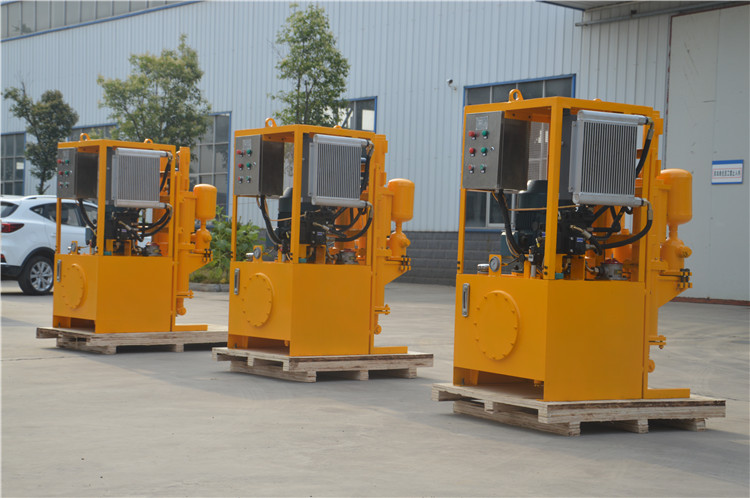Double Plunger Hydraulic Grout Pump

In the United States, grout pumps of a progressive helical cavity design have in the past been preferred by many agencies for foundation grouting applications. These mechanically simple pumps produce a continuous feed with little pressure variation and with relatively low likelihood of plugging or breakdown that might cause interruption in the grouting operation. However, high wear rates on the rubber stator and steel rotor-especially if sanded grout mixes are used can lead to relatively high maintenance costs. Progressive cavity pumps sometimes are equipped with a stick-shift, automobile-type transmission; this transmission faciliates achieving the desired grout flow rate over a wide range of pressures. Rheostats accomplish a similar function for electrically operated pumps.However, the simplest way to compensate for excessive pump discharge is to provide a short bypass line from the pump back to the agitator. Multiple-stage progressing helical cavity pumps are available for use for applications in which pressures up to 2 MPa are required. Injection rates as high as 90 m3/h can be achieved.The injection pressure and rate are controlled at the grout hole through use of a return line when using this type of pump.
Plunger pumps feature a fast suction stroke that creates a high grout velocity,flushing the suction valve on each stroke. Heavily sanded grouts with particle sizes up to 8 mm can be pumped, and injection rates up to 13 m3/h can be achieved Depending on the plunger size, double-acting and injection plunger pumps can be configured to deliver grout at pressures up to 138 bar. However, a lower maximum pressure configuration should be chosen if a maximum injection rate is desired. Plunger pumps have low wear characteristics, and the plungers may be changed relatively quickly. Pumps such as those produced by Clivio or Hany are favored by some practitioners because the maximum allowable pressure be can preset at the pump. Wagener makes a combination pressure regulator and relief valve that can be attached to its pumps to achieve the same purpose. i.e., elimination of the need for a return line and pressure control valves at the injection location when using stable grouts that will not settle or segregate significantly low rates of flow.Grout plants manufactured by Hany use two synchronizeod plunger pumps operating in parallel to reduce the amount of surge.


